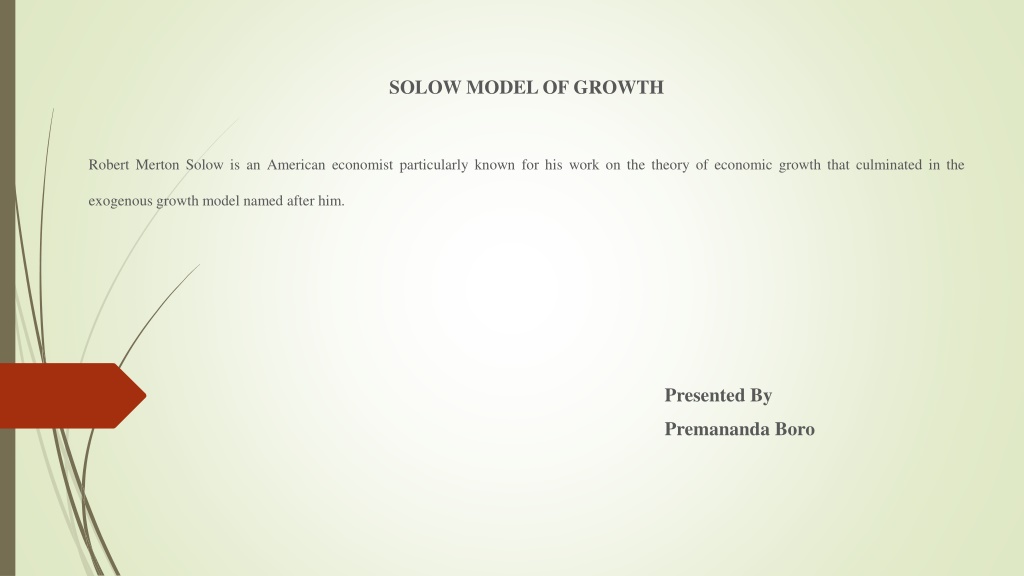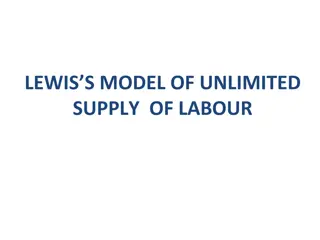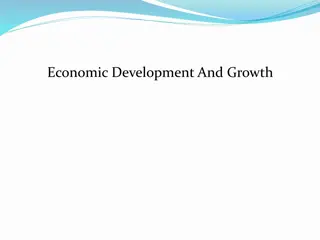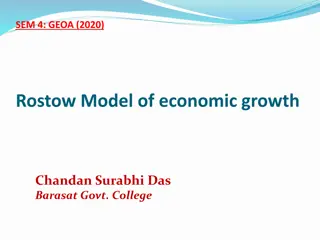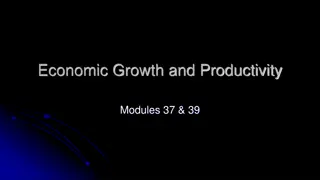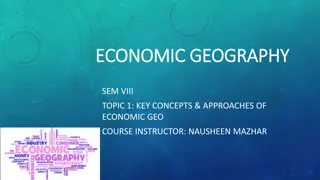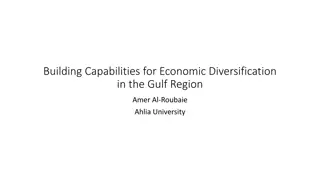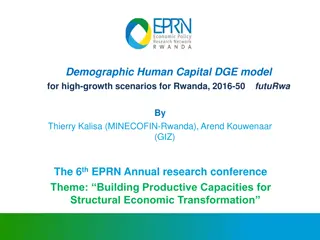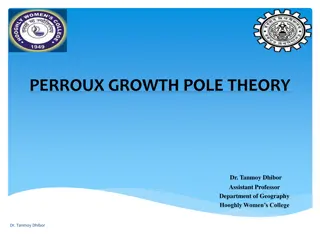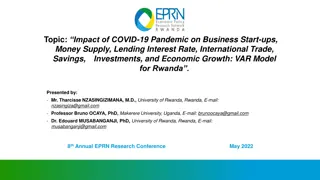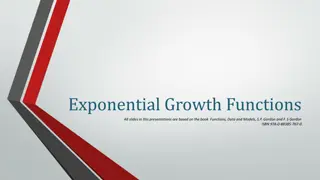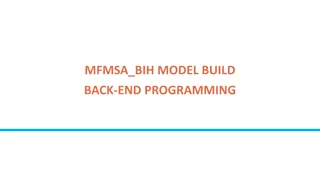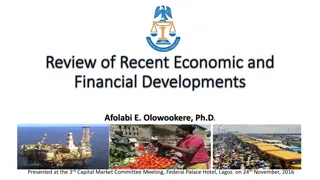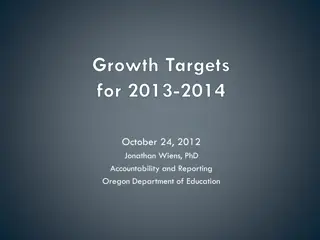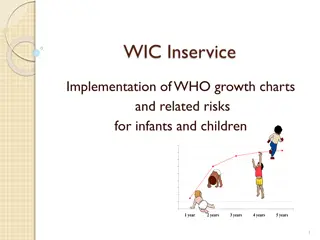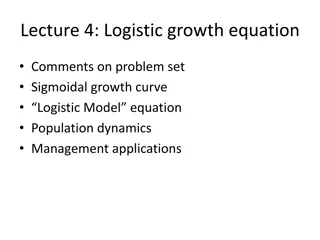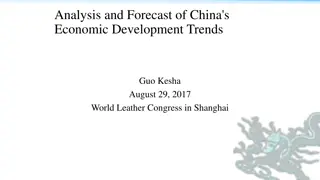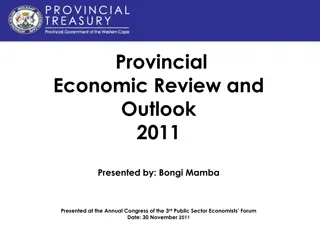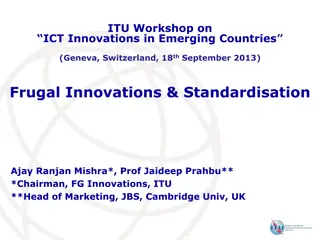Solow Model of Economic Growth
Robert Merton Solow's exogenous growth model focuses on the relationship between capital and labor in achieving long-run economic growth. The model assumes certain conditions and considers the equilibrium ratio for sustainable growth. However, criticisms exist around the homogeneity of capital assumption and the lack of empirical justification for some aspects of the model.
Download Presentation

Please find below an Image/Link to download the presentation.
The content on the website is provided AS IS for your information and personal use only. It may not be sold, licensed, or shared on other websites without obtaining consent from the author.If you encounter any issues during the download, it is possible that the publisher has removed the file from their server.
You are allowed to download the files provided on this website for personal or commercial use, subject to the condition that they are used lawfully. All files are the property of their respective owners.
The content on the website is provided AS IS for your information and personal use only. It may not be sold, licensed, or shared on other websites without obtaining consent from the author.
E N D
Presentation Transcript
SOLOW MODEL OF GROWTH Robert Merton Solow is an American economist particularly known for his work on the theory of economic growth that culminated in the exogenous growth model named after him. Presented By Premananda Boro
SOLOW MODEL OF GROWTH According to prof. Solow, for attaining long run growth, let us assume that capital and labour both increase but capital increases at a faster rate than labour so that the capital labour ratio is high. As the capital labour ratio rises, the output per workers declines and as a result national income falls. The saving of the community decline and in turn investment and capital also decrease. The process of decline continues till the growth of capital becomes equal to the growth rate of labour. Consequently, capital labour ratio and capital output ratio remain constant and this ratio is popularly known as Equilibrium Ratio .
ASSUMPTIONS 1. There is full employment in the economy. 2. The two factors of production are capital and labour. 3. Labour and capital are substitute for each other. 4. There is flexible system of price-wage interest. 5. Available capital stock is fully utilized. 6. One composite commodity is produced. 7. Investment is not of depreciation and replacement charges.
In the above Fig. 1 shows that on x-axis represent the capital for worker and y- axis indicate the output output per Worker (Y/N). the line I=S=f(K) passing. Through the origin shows the depreciation curve (d=dk). when increase in capital, depreciation also increases. In the above depreciation curve it is Shown the I = S = f(k) which is investment. we multiple by savings, then we get the save in spent in investment in above curve represent the production, output per worker increase at a diminishing rate as K increases due to law of diminishing returns with increase in K/N we get increase in Y/N output per workers. In the above Explanation we get the conclusion. when Investment is greater than Depreciation the capital grows on the other hand, when Investment is less than Depreciation. the capital Shrinks (machinery, wear and tear) is more than the Investment. At the point equilibrium. occurred "Steady state" (ss) equal to the Depreciation.
CRITICISM 1. Unrealistic Assumption of Homogenous & Malleable Capacity: Solow model is based on the unrealistic assumption that exists homogeneity and malleable of capital. In fact, capital goods are very much heterogenous and so there arises the problem of their aggregation. 2. Absence of Empirical Justification: Solow model is based on the assumption of labour increase technical progress. But there is no empirical justification of this assumption. It is simply a special situation of neutral technical progress of Harrod-Domar model.
Disclaimer: This study material is prepared from available text books and various open access online resources. The purpose of this material is purely to benefit the students.
